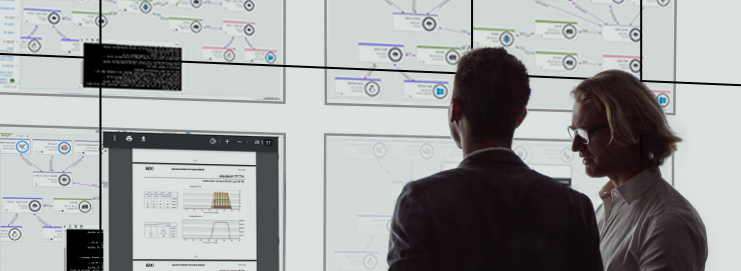Network Detection & Response (NDR) Best Practices
Category: News
Published: 1st September 2025

Effective Network Detection & Response (NDR) depends on more than just technology. By following these best practices, organisations can improve threat detection, speed up incident response, and get maximum value from their NDR investment.
- Establish your Network visibility
You should assess your network infrastructure to identify blind spots or areas which lack visibility. This evaluation should cover cloud, on-prem, and remote environments to ensure it is thorough. Visibility into encrypted traffic, lateral movement, and shadow IT is essential for early threat detection.
- Implement baseline monitoring
Monitor and analyse network traffic patterns over a period to establish a baseline of normal network behaviour. This will serve as a reference point to indicate whether there are any anomalies or potential threats. This baseline should be regularly updated changes occur in the environment.
- Tailor detection rules
Customise your NDR solution’s capabilities to align with specific organisation security requirements. This fine tuning should be based upon your industry, network architecture, and the current threat landscape.
- Incorporate with existing security infrastructure
Integration with existing security tools and infrastructure e.g., SIEM, firewalls, and EDR platforms is necessary. This streamlines the response process and ensures comprehensive visibility across your network. For example, integrating NDR with SIEM platforms enables automated threat containment, such as isolating compromised devices and blocking malicious traffic.
- Continuous monitoring
Your NDR solution should operate in real-time, continuously monitoring and analysing network traffic. This quick response is critical in remediation capabilities and ensuring minimal impact.
- Staff training
Your security team should be trained in effectively using your NDR solution to leverage its full potential.
- Automate incident response
Leverage automation and orchestration capabilities to improve the efficiency and effectiveness of your NDR deployment. Automate repetitive tasks, such as log analysis and alert triaging, to reduce manual effort and response time.
By following these NDR best practices, organisations can enhance their security posture, improve threat detection and response capabilities, and effectively leverage their NDR investment to protect their critical assets and sensitive data. This ensures that your solution can be utilised to its optimal ability.
